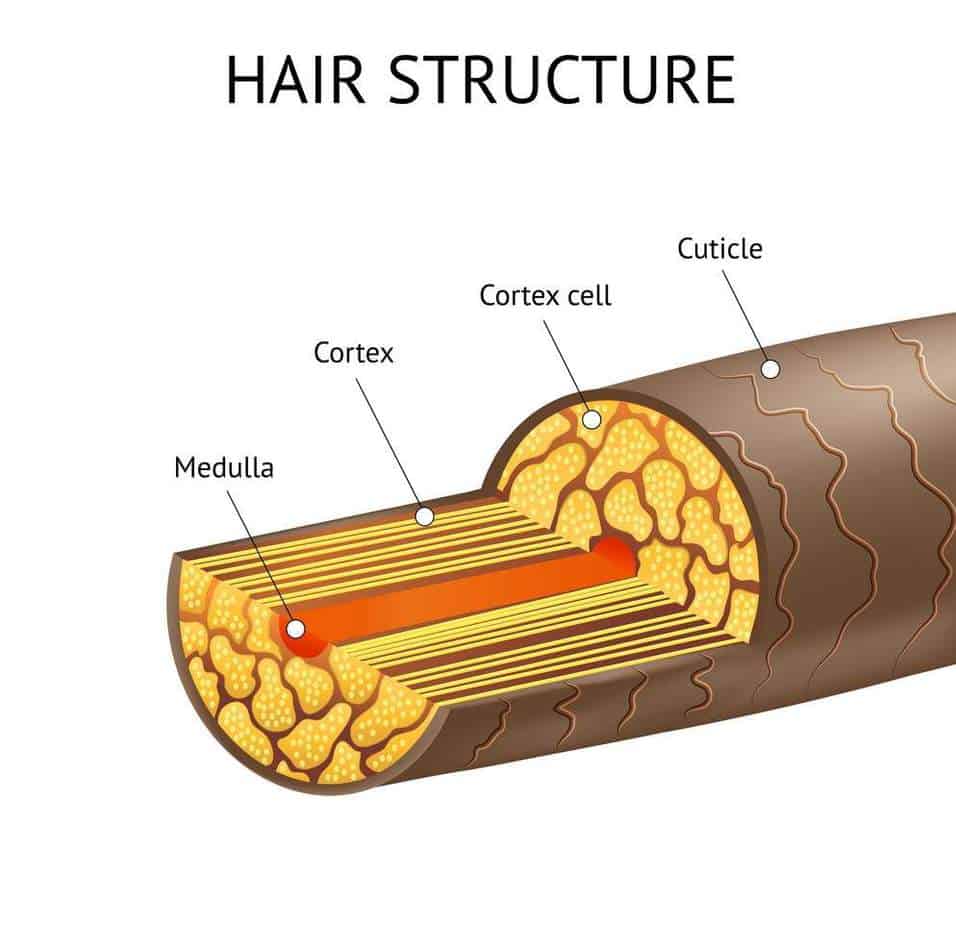Suba diving is extremely fun and exhilarating. However, it can definitely do some serious damage to your hair. Luckily for you, I have a few tricks that I have learned along the way.
Nothing can stop avid scuba divers not even a bit of hair damage. However, what if you didn’t even need to sacrifice your hair for your love of diving?
Let’s start off by understanding hair when it’s wet. Wet hair is when your hair is in the most fragile state. It becomes broken and damaged very easily when it is wet. Water softens the outer cuticle and gets pulled into the hair cortex. This expands the hair making it highly vulnerable to breakage and damage.
Why is wet hair more fragile? All strands of hair are coated in a thin protective layer called the cuticle. This layer is made of keratin proteins. When hair gets wet the cuticle layer softens and becomes weaker. It absorbs the water and draws it inside which expands each strand. This softening and expansion makes the hair more suseptable to breakage.
How does salt water affect the hair? Salt is a drying agent. It absorbs moisture and draws it away from the source. The same is true for your hair. When you dive in the ocean the salt actually removes moisture from your hair and scalp. This will leave your hair feeling dry, brittle, and fragile.
How can pools damage hair? All pools contain a mixture of chemicals to keep them clean. One of the main chemicals used in every pool is chlorine. This chemical causes dryness and irritation to the hair and scalp. Effects are even more severe if you have color-treated hair because the cuticle is porous and absorbs more of the chlorine.
Now that we have an understanding of what happens to wet hair let’s take a look at some of the best ways to protect it while scuba diving.
Oil
Oils such as coconut, argan, almond, or olive are reef safe and good options for protecting your hair. It’s actually the main way I like to keep my hair safe when diving
The oil acts as a barrier on the hair separating it from saltwater, pool chemicals, and breakage.
It will prevent saltwater or pool chemicals from being absorbed past the hair cuticle and into the cortex. This vastly reduces the amount of damage done to hair.
Olive oil contains a natural SPF of 7.5, coconut oil has an SPF of 7, and almond oil has an SPF of 4.6 so these will also help reduce sun exposure too.

Just apply a thin layer of the oil to your hair. Especially make sure to get the middle of your hair down to the ends. A thin layer is all you need for protection.
If you don’t have oil or don’t feel like buying any you can also use reef safe conditioner or a hair masque. Please make sure it’s reef safe though. You want to avoid ingredients like:
- benzophenone (BP-2)
- Nano Titanium Dioxide
- Nano Zinc Oxide
- 4-Methlybenzylidene
- OD-PABA (Para-aminobenzoic acid)
- 3-Benzylidene Camphor
- Butylparaben
- Octinoxate
- Octocrylene
Since these ingredients are known to reduce coral growth and cause coral bleaching it’s really important, as a scuba diver, to avoid using them. A great reef-safe leave-in conditioner that works great while diving is this one by Stream2Sea.
More about keeping reefs safe here: 4 Important Ways Divers Can Protect Coral Reef
Tie
It’s ideal for people with longer hair to keep it tied back when scuba diving. The longer the hair the more it floats around and can actually get caught in things or obscure your view. Some of my favorite diving hairstyles are:
- Braids/ cornrows
- Low ponytail
- Bun
Keeping hair tied back helps prevent damage as well. The hair won’t get knotted or tangled in your equipment. Especially in your face mask. I can’t tell you how many times I have ripped my hair because it was caught in my mask.
These hairstyles are very easy and simple to do and all you really need is 1-2 hair elastics.
Braids are my personal go-to style for diving. It keeps my long hair in place and secure throughout the entire day of diving. French braids or a low braid are the ones I do the most.
If you don’t know how to braid, no worries. A simple ponytail, bun, or twist work perfectly well too.
Tickle Monster: I used to dive without tying my hair back. On just about every dive at some point, part of my hair would rub up against my hand or neck. It would always frighten me and cause me to jump.
Cover
Another great option is to cover your hair with a diving hood or swim cap. Covering the hair keeps it safe from saltwater, chlorine, and tangles. It’s a great way to avoid exposure to the sun as well.
Swim caps and diving hoods will keep your hair out of the water and prevent damage and breakage.
All you need to do is slip it on, tuck your hair in and you are ready to go. Both swim caps and diving hoods are lightweight and easy to travel with.
Quality swim caps start at $5 (this is my favorite) and diving hoods start at $11 (this is the one I have).
There are also swim caps that offer more space to accommodate longer hair and ponytails.
Mask Straps
The straps of face masks are made of rubber that can sometimes create friction and breakage along the back of your head.
The best way to prevent this from happening is to get a mask strap cover. They are inexpensive, easy to use and universal in size. Even if you are planning to rent all your scuba gear on a trip you can easily bring along your mask strap cover.
They come in just about every color and pattern you can imagine and offer great hair protection. If you prefer a solid color this one is a great option from Cressi. If you prefer a fun pattern try this one from Flow Scuba.
After Dive Hair Care
No matter how you choose to protect your hair during a dive it’s equally as important to take care of it afterward.
Once your diving is done rinse your hair in fresh water. Most dive centers have rinse-off showers or hoses in the back of the facilities. Do a quick rinse before heading back to your accommodation.
Once back in your room, jump into the shower to do a full rinse of your hair. Washing your hair with shampoo is optional but you want to make sure to condition your hair.
Choose a thick conditioner and leave it in a little longer than usual. Aim for at least 5 minutes. You can always leave it in for longer if you prefer. Rinse it out as usual and follow it up with either a leave-in or take a dime-size amount of conditioner and run it through your ends and leave it in.
Since brushing wet hair stretches the strands and can cause breakage, avoid brushing your hair when wet.

